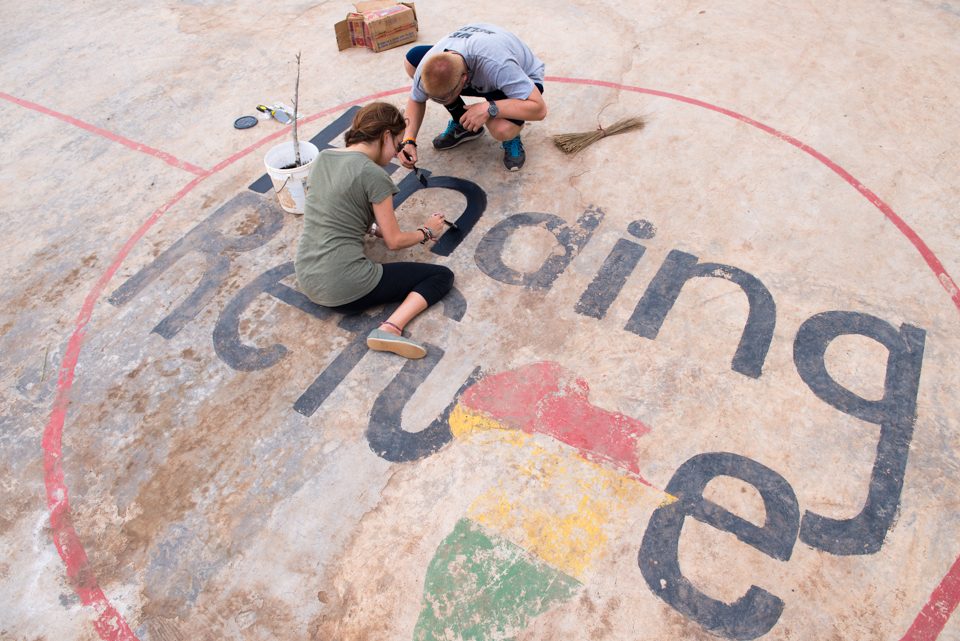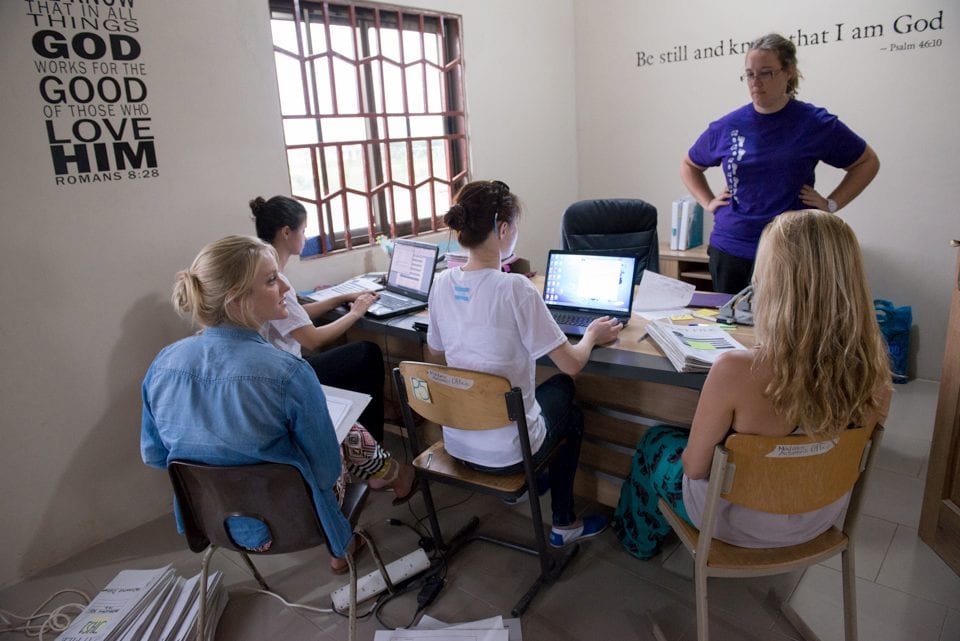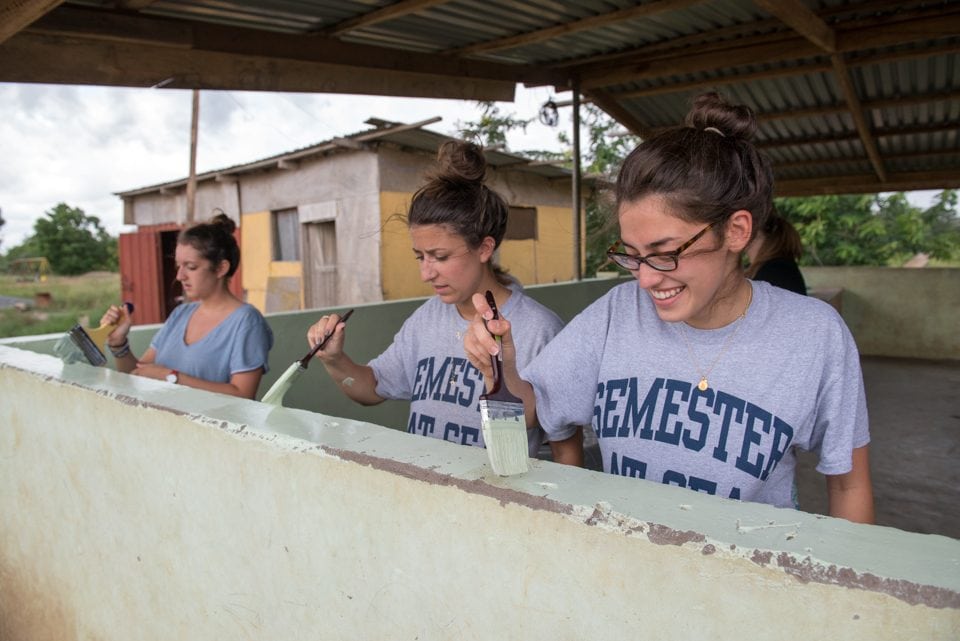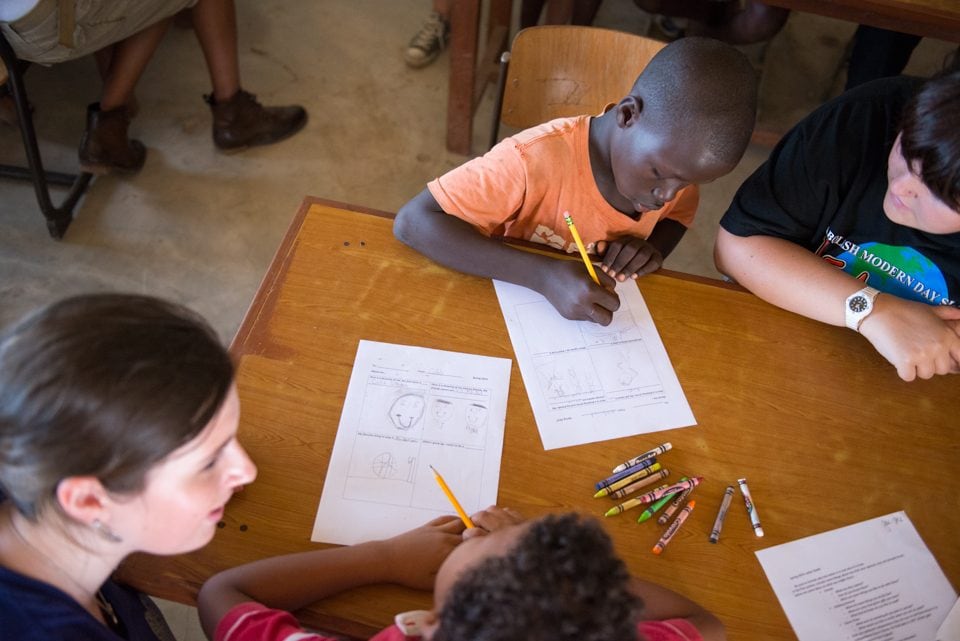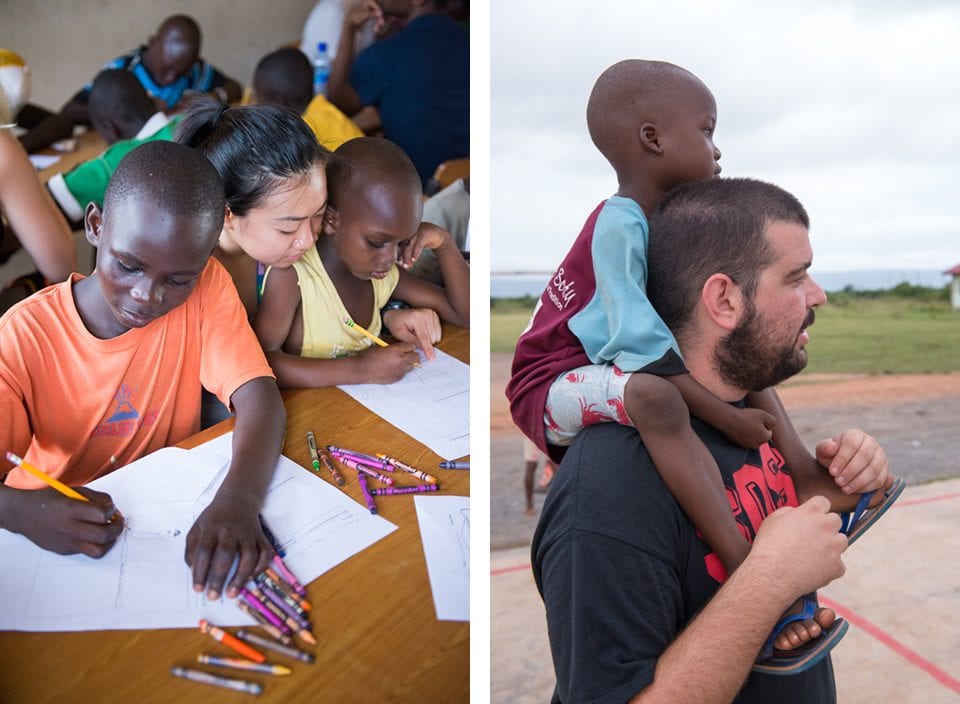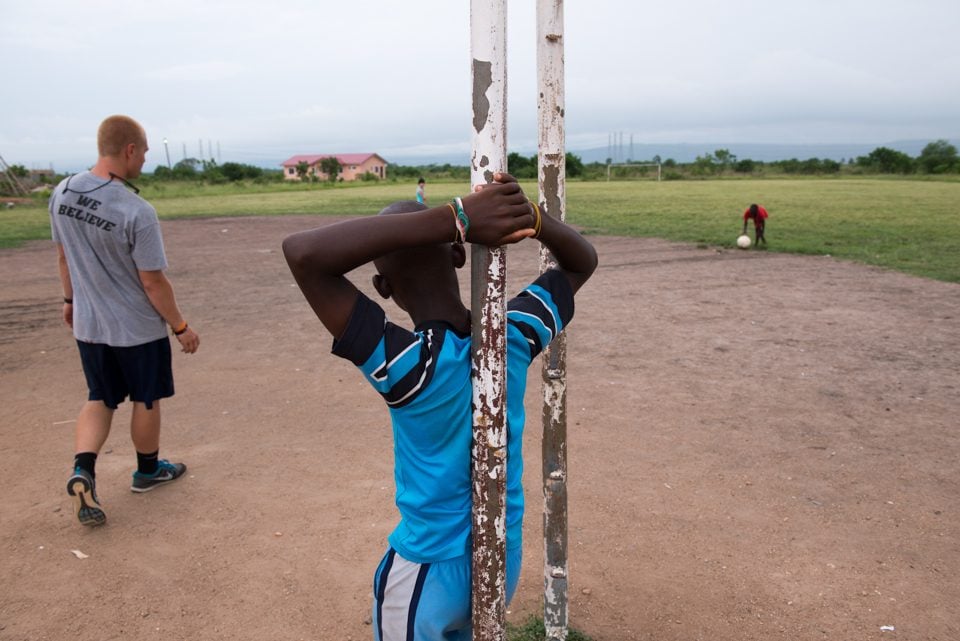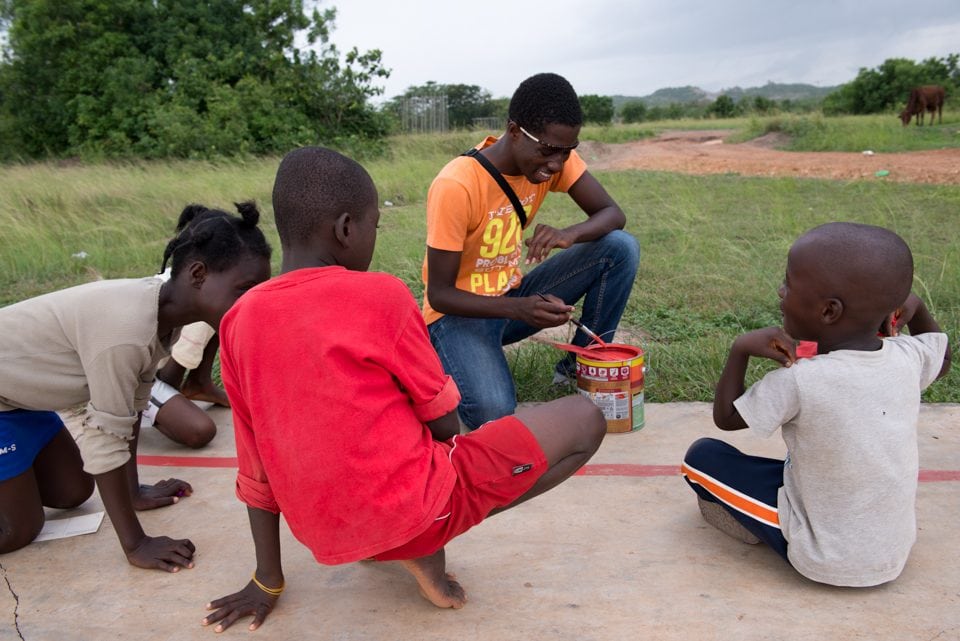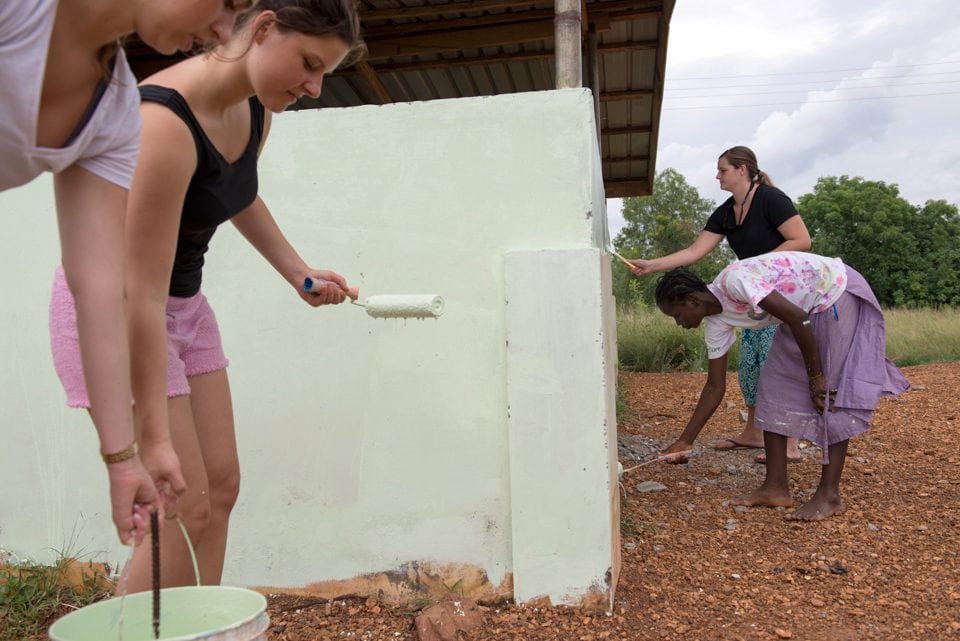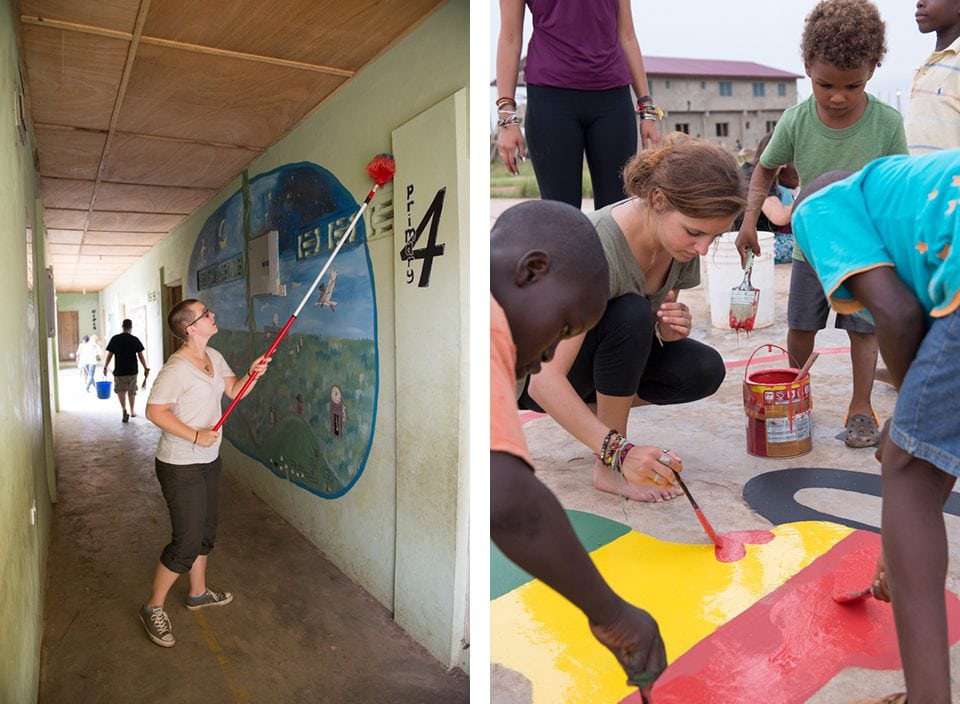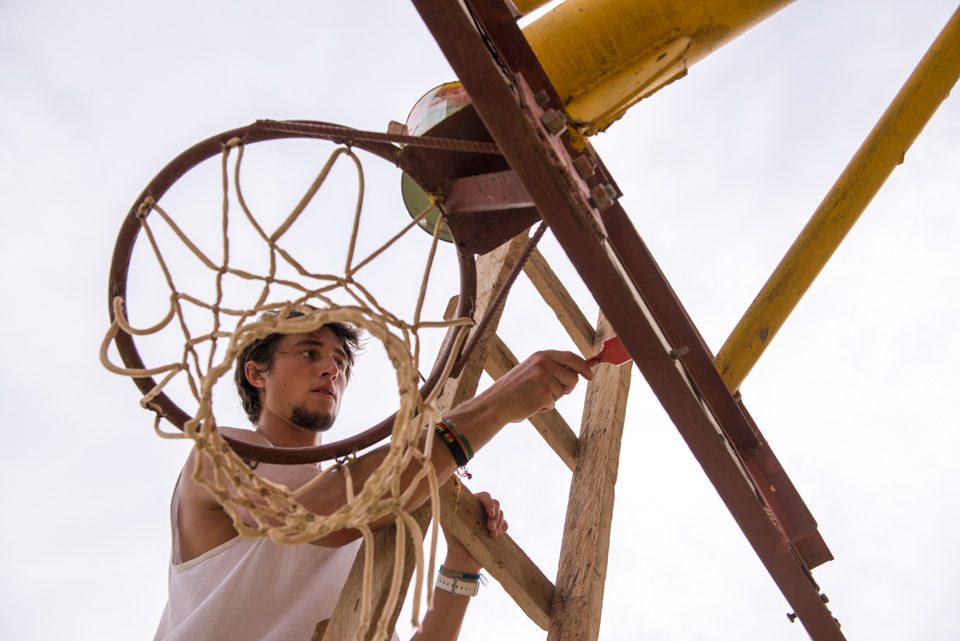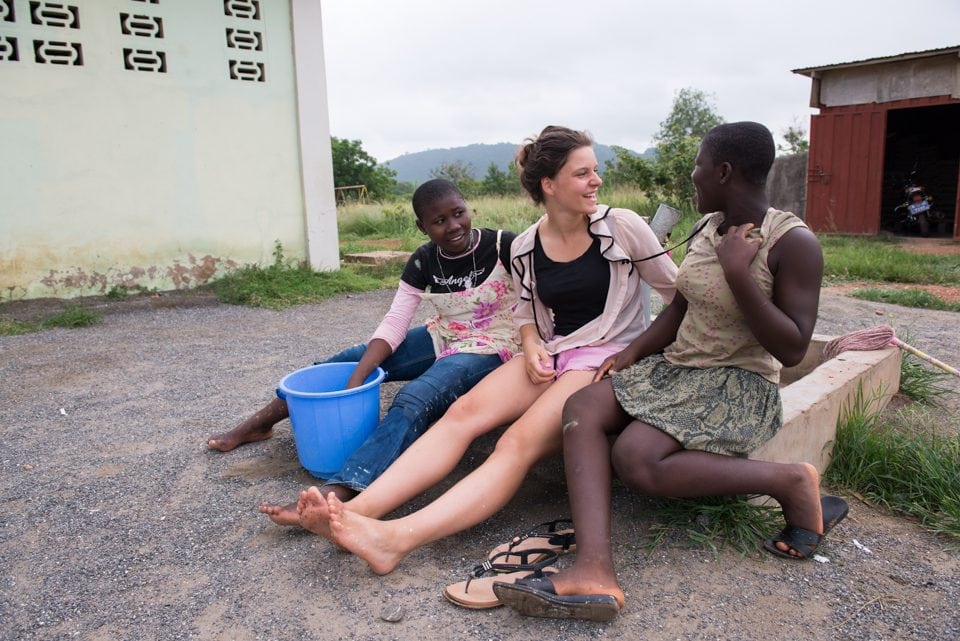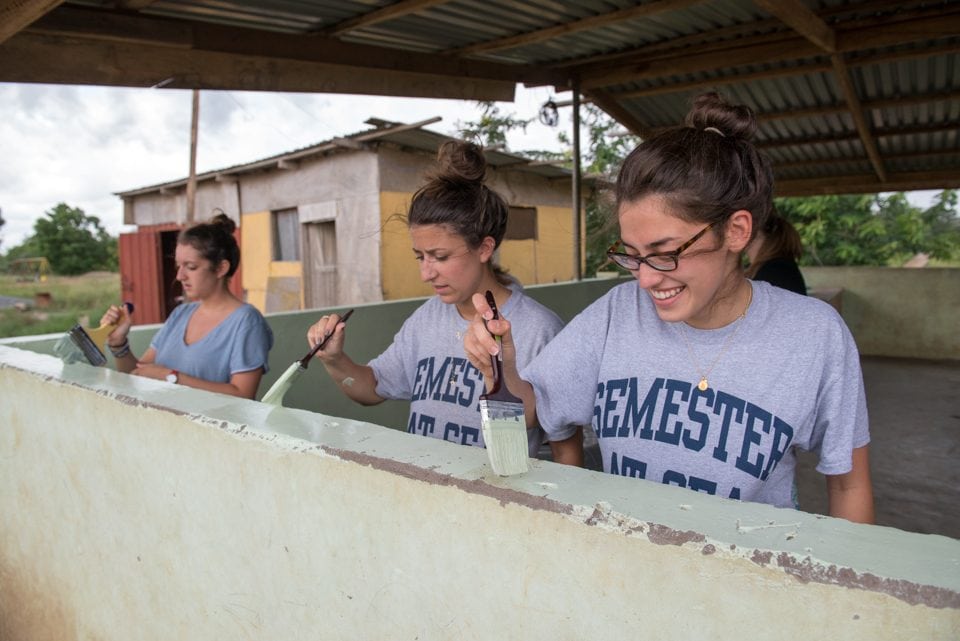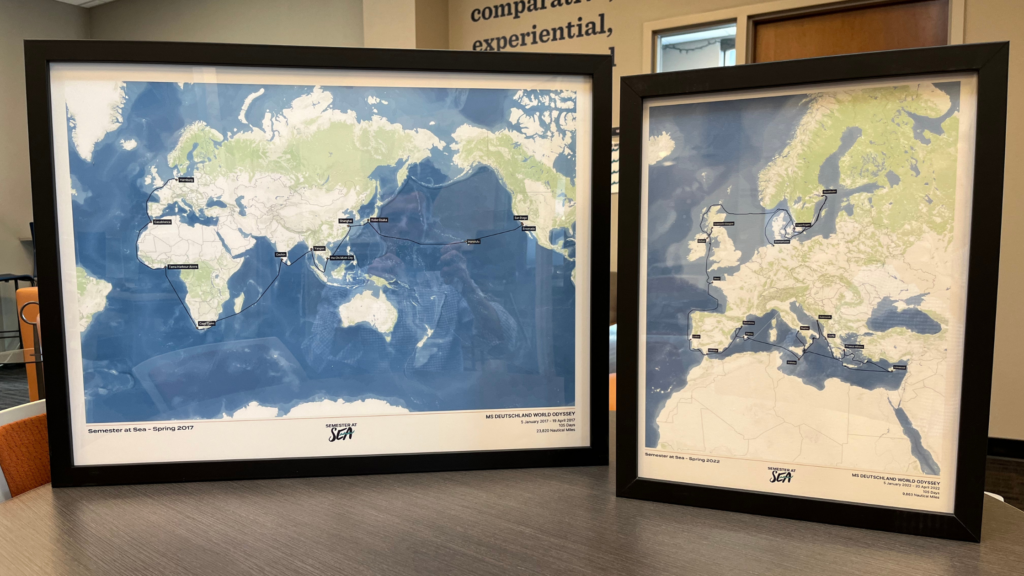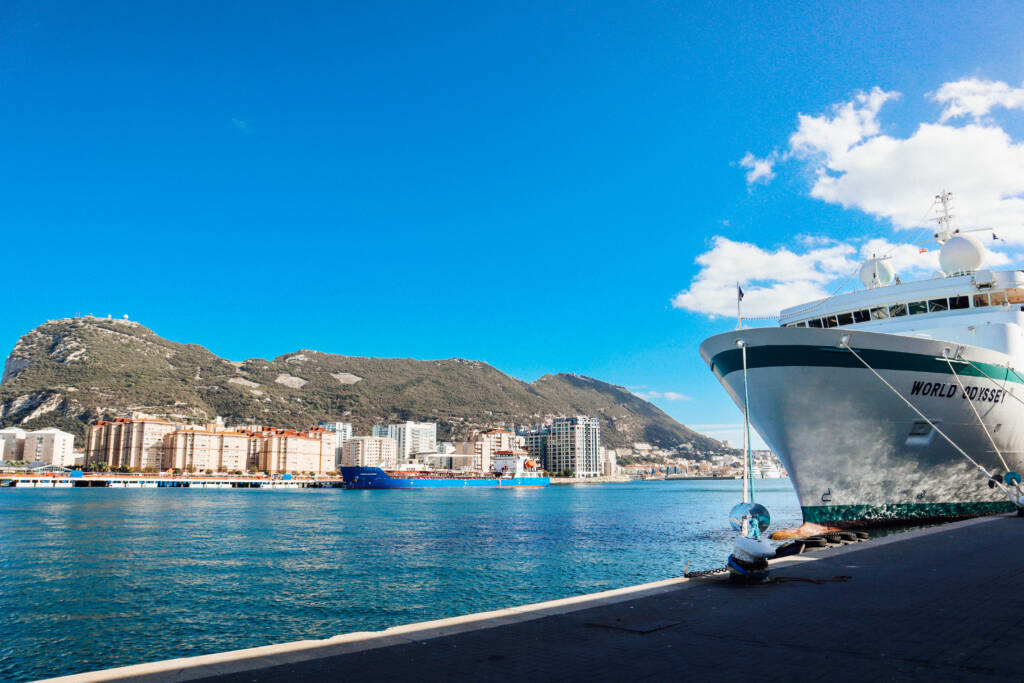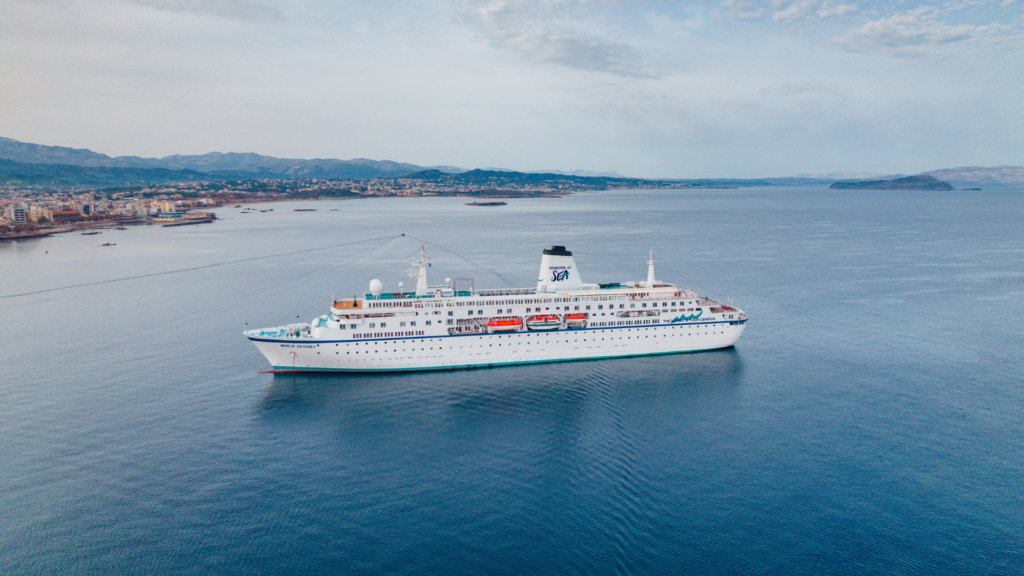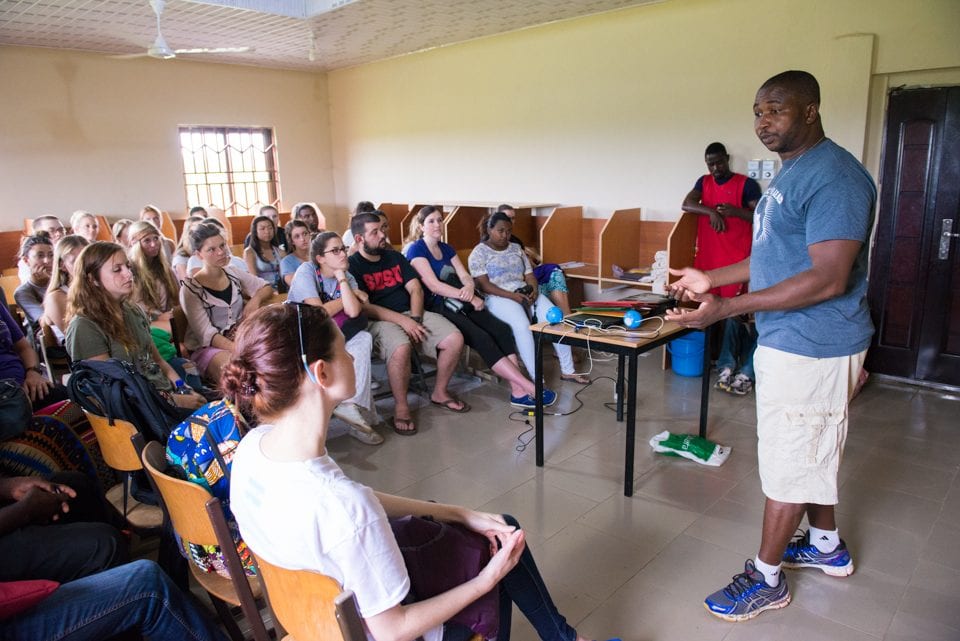
About an hour north of Ghana’s capital, down a meandering red dirt road which cuts through thick green vegetation, lies the City of Refuge Ministries (CORM), the dream-turned-reality of Johnbull and Stacy Omorefe. Semester at Sea students traveled with Professor Christine Mahoney on an EntrepreneurSHIP service field program to learn more about the non-profit that works to rescue children from child slavery and prevent human trafficking.
Both foreigners to Ghana, the Omorefes first met in Ghana and after marrying in the United States decided to return to the country to make a difference. They began rescuing children from forced labor on Lake Volta, the largest manmade lake in the world. Children working for a fisherman master on the lake don’t receive an income or an education and are subjected to long hours and disease. Many times the children find themselves in this lifestyle of hard labor because they are trafficked into the industry by desperate single mothers or other family.
CORM comes into situations involving child slavery and offers the fishermen masters a way out. Although child labor and human trafficking are both illegal in Ghana, the Omorefes don’t put the law into play. They explain to the masters the way in which a child’s life can improve if they come to the City of Refuge and also ask for permission from the family member who put the children into the initial situation. After delicate negotiations, they are often successful in gaining freedom for many children.
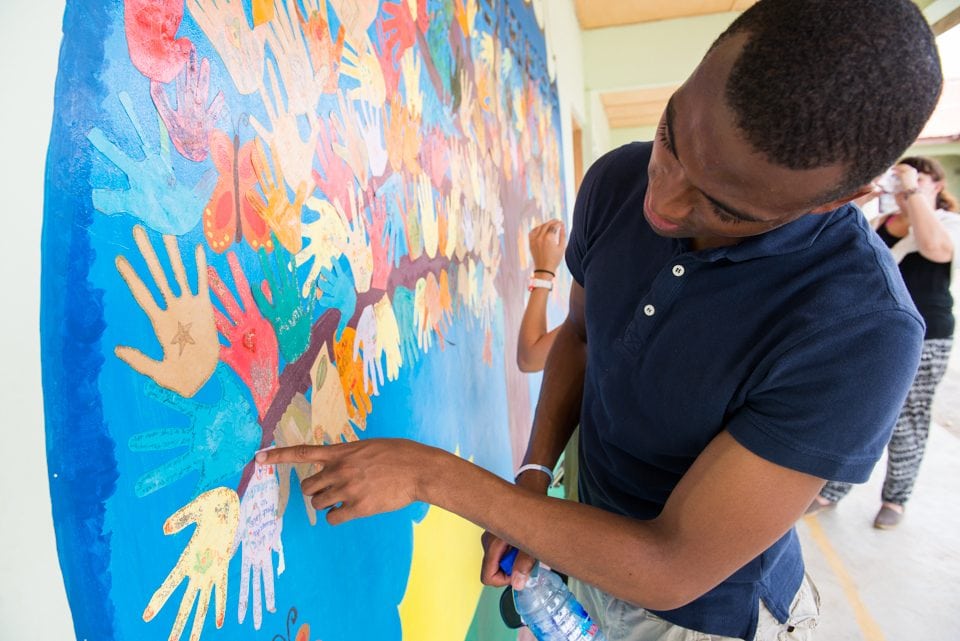
Currently 36 children rescued from child slavery in the Volta region live on the small compound in separate homes for boys and girls. They attend the Faith Roots International School, a school located on the grounds that was founded in 2011 to educate the rescued children. It has since grown to serve children from the surrounding community as well, who attend with the help of sponsorships.
The Omorefe’s entrepreneurial spirit has spread to the non-profit’s water purifying business, Save a Child. They process plastic sachets of water, more common in Ghana than plastic bottles, that are printed with messages educating about the issue of human trafficking in Ghana. Half of the profits are funneled back into CORM and the water benefits the community by providing clean drinking water and employment for single mothers. They also empower single mothers in other entrepreneurial ventures such as making and selling clothing and goods.
Furthermore, CORM has worked with YGAP, an Australian social incubator that raises funds to channel to local social entrepreneurs to solve social issues. The funding received through YGAP has aided in the creation of classrooms and the water business on the CORM’s campus.
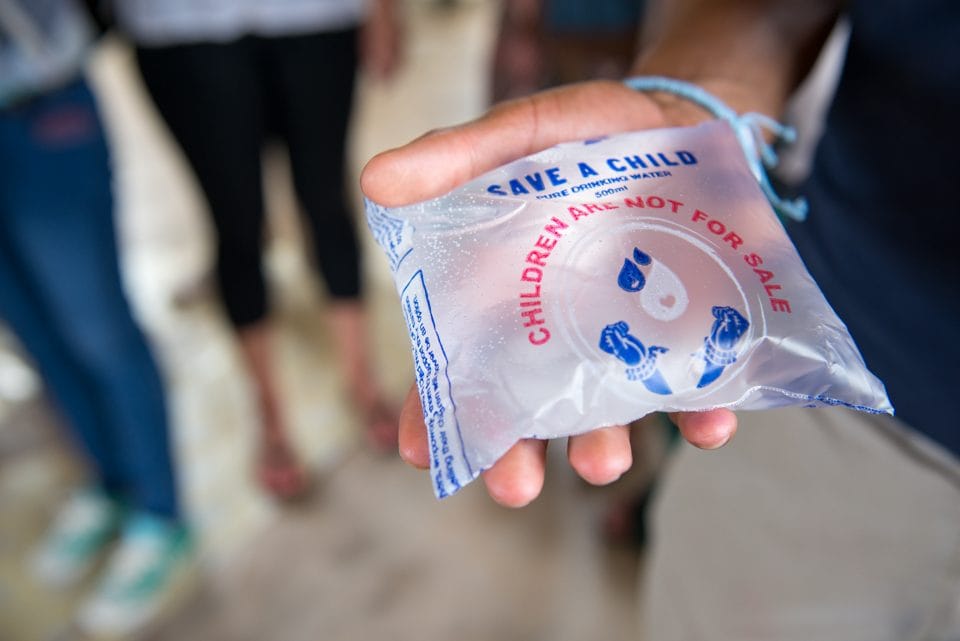
After speaking with the Omorefes and touring the City of Refuge, students had the opportunity to get their hands dirty and contribute to the mission. Elizabeth Nelson from the University of San Diego explained the activities for the day, “At CORM we were able to play a larger part in the organization and give back to the campus itself rather than having only a brief interaction with the kids. We were assigned different tasks that included cleaning up the classrooms, re-painting the basketball court, painting an outside patio used for worship, cleaning up the fields, and helping the kids write scholarship letters to their sponsors back in the United States. The CORM visit was fulfilling and I thought this trip was a cohesive blend of allowing us to interact with the kids as well as make an impact on the organization, so all sides got to benefit from our time there.”
For Graham Edwards from the College of Charleston, visiting CORM was like coming home. After his sister Maude sailed with SAS in Fall 2010, Graham and some of his family members did an independent week-long visit in 2011. “Going back and seeing the progress from the past few years of hard labor was incredible. When we first laid lines on the basketball court, the school and new houses for the kids were in the beginning stages of development. Only the foundation was visible, and a few walls of the school and orphanage. The compound as a whole is almost complete and the school is up and running and educates over 250 kids. It was surreal to see it all in person once again, from rubble it had risen.”
Mickey Sobel from San Diego State University also learned about CORM from his sister who visited while she was sailing with SAS and who will be returning to intern there this summer. When asked why he wanted to visit, Mickey explained, “I went for several reasons. The first being I thought it would be an amazing experience since as of now my career goal is to somehow be involved in the international adoption system. But I had also heard great things about the family and children and wanted to meet the family my sister would be living with over the summer.”
As the fresh paint was drying and sponsor letters were wrapping up, the Semester at Sea group began to say their goodbyes to the warm people at the City of Refuge. Elizabeth Nelson noted, “Something that stood out to me about the day was taking a step back and observing my peers interact with the children and feeling such a strong sense of respect for them. Going to the CORM made me really proud to be a part of that group. Semester at Sea attracts an array of different personalities, but service trips like the CORM visit show the commonality that we all share of wanting to give back to the world. We were all nervous about going to an organization that had kids who had been trafficked for labor in the past, but it was incredible to see the sensitivity and sincerity that the Semester at Sea students treated the children with.”
By being able to see the success of the Omorefes, who decided to make a difference by focusing on the important social issues of human trafficking and child slavery, Semester at Sea students left the small oasis in the countryside knowing that dedication, determination, and an entrepreneurial spirit can indeed make a difference. And above all, as explained by Johnbull, “Love is the most powerful weapon.”
